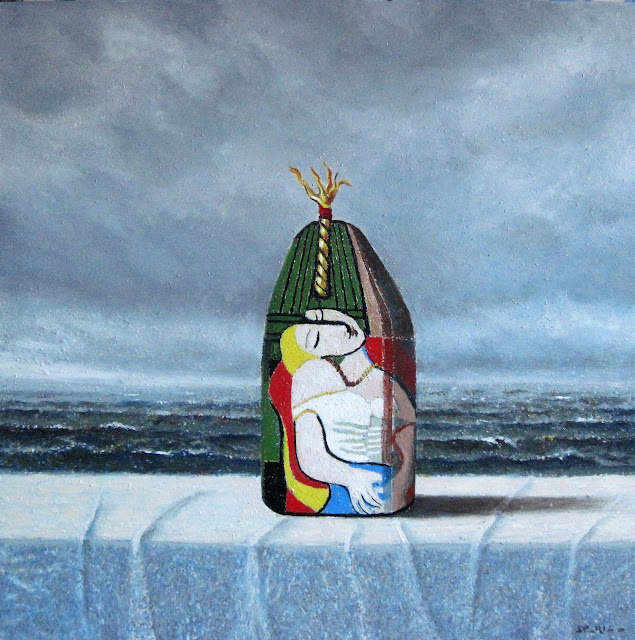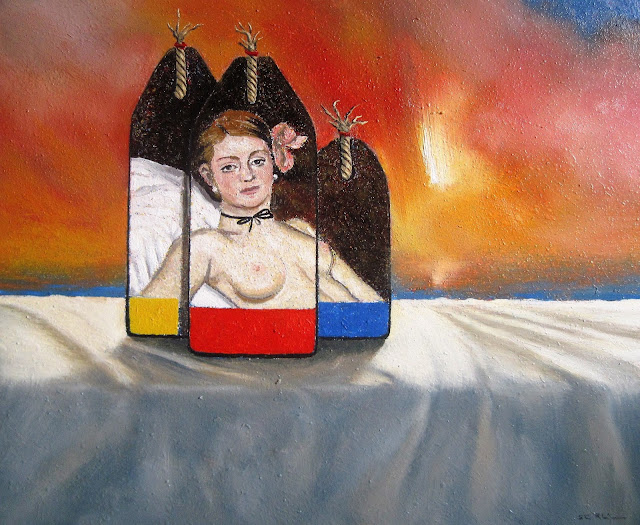de Chrico's Voyage

de Chirico's Voyage, oil on masonite, 24" x 20", Steven Rhude "In the neighborhood I grew up in, people did not spend time outside their houses. I often played games as a child that centered around life after a neutron bomb. I would imagine I was the only person left alive; solitary, playing with my Hula-hoop in the driveway; the TVs flickering through the windows of houses nearby were simply remnants of a lost civilization. If I walked into one, I’d find a skeleton sitting in a La-Z-Boy bathed in the glow of The Price Is Right ." - Cara Hoffman https://www.theparisreview.org/blog/2017/03/06/vanishing-point/ Steven Rhude, Wolfville, NS







